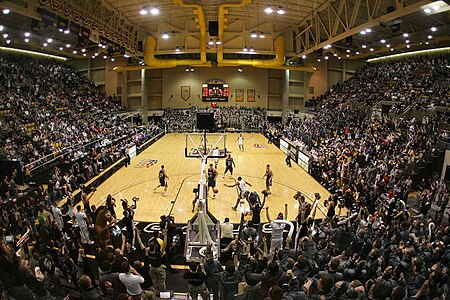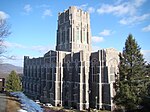Christl Arena

Christl Arena is a 5,043-seat, multi-purpose arena in West Point, New York. It was built in 1985 as part of the Major Donald W. Holleder Center, which also houses Tate Rink. It is home to the United States Military Academy's Army Black Knights men's and women's basketball teams. It was named after 1st Lieutenant Edward C. Christl Jr. '44, a former basketball captain who was killed in combat in Austria during World War II. (Maj. Holleder, '56, the namesake of the athletic center, was an All-American football and basketball player killed in combat in Vietnam in 1967.) The arena hosted portions of the 1995 and 1999 Patriot League men's basketball tournaments, as well as portions of the 2006 and 2008 Patriot League women's basketball tournament, including the 2006 Patriot League championship game, as Army defeated Holy Cross, clinching the first Division I NCAA Tournament bid in program history.
Excerpt from the Wikipedia article Christl Arena (License: CC BY-SA 3.0, Authors, Images).Christl Arena
Fenton Place,
Geographical coordinates (GPS) Address Nearby Places Show on map
Geographical coordinates (GPS)
| Latitude | Longitude |
|---|---|
| N 41.38641 ° | E -73.96571 ° |
Address
Fenton Place 714
10996
New York, United States
Open on Google Maps








